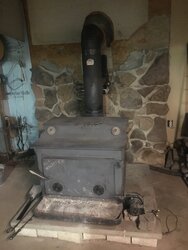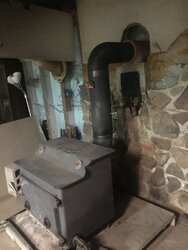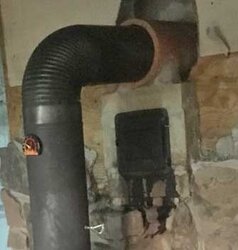Pictures would give us an idea of what stove you're working with. And its connection.
Try it with flue damper open. Close intake dampers down to a crack if needed to slow the fire.
Many people rationalize closing the pipe damper "holds heat in the stove". It doesn't. If you take temp readings before and after damper, you will see the same temp. It slows velocity of rising gasses, reducing draft of an over drafting chimney. If your stove is a double door, capable of being burned in Fireplace Mode with a screen in place, the pipe damper becomes your only control. It is there to slowly close until smoke starts to roll in at top during open door burning with screen in place. Open slightly for the correct draft that allows smoke out, retaining some heat. A single door stove does not require a pipe damper for open door burning, so they only need one in the case of an over drafting chimney. Keep it open with doors closed. Check temp at top, and IF much higher than 250, close it slightly to prevent too much heat loss. You can't close it much. Just slightly.
I'm still not sure if you have a 6 or 8 inch stove. That makes a difference if it can handle a baffle or not.
The stove should also be sized to the chimney, so a 6 inch outlet increased to 8 is part of your problem not getting enough heat into the chimney. If you have a 6 inch stove, use 6 inch pipe, line the chimney with an insulated liner, and baffle the stove.
The baffle must allow no smaller than the square inch area of stove outlet, pipe and chimney above it. (area smoke travels)
A baffle inside is advisable WITH a chimney that stays hot inside. Too much baffle retains too much heat in the firebox, not heating the chimney enough. The main advantage of a baffle is keeping the heat in the firebox, raising firebox temperatures allowing more smoke particles to be burned off in the box. It also adds resistance to flow inside firebox, requiring the flue damper if used to be open more. It will make the front of the stove hotter than the rear. Less smoke is less chance of particles sticking to flue walls forming creosote.




